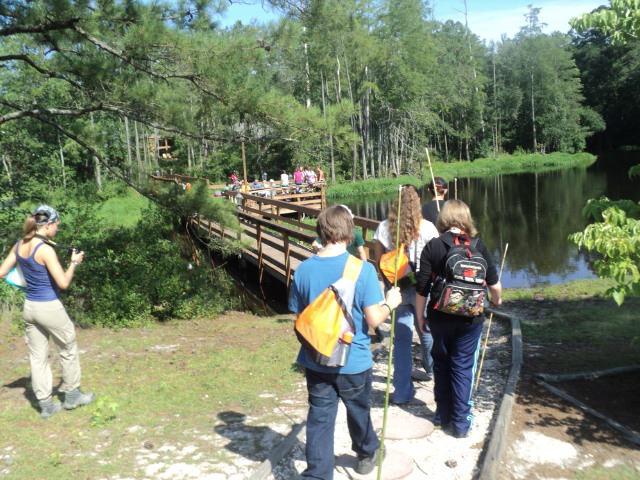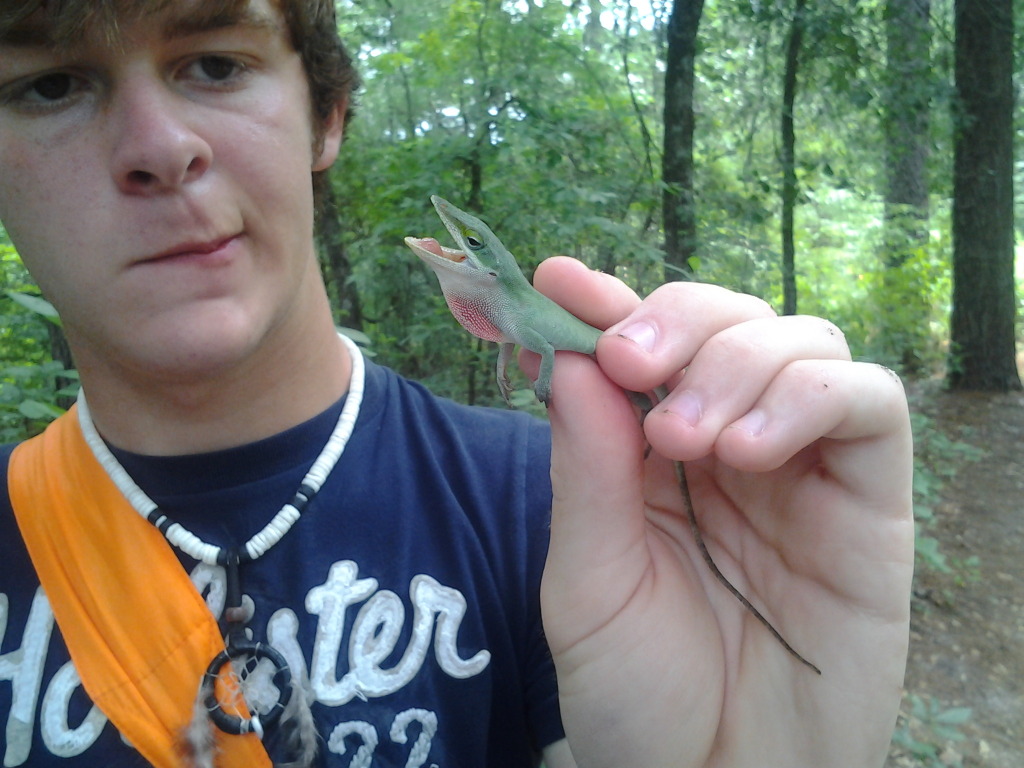About
Lizard lore abounds even though there are fewer NC lizard species than NC frog, salamander, snake, or turtle species. Lizards are fascinating reptiles that are high in abundance in NC though they are sometimes difficult to find and even harder to capture. Lizards play a vital role in NC ecosystems by helping control insect populations.
Project Overview
In this study, students look for, collect and identify lizards on the Chestnut Ridge & Rockfish properties.
Inquiry Questions
What kinds of lizards can be found at Chestnut Ridge & Rockfish? What are their distribution patterns?
Data Collection
Students actively search for lizards by walking trails and visually inspecting trees, fences and buildings onsite. After participants capture lizards by hand or with lizard lassos, they identify the lizard species and sex, measure and weigh the animals using calipers and pesola scales. Lizards are marked with a permanent marker and released for our mark recapture study.
Data Sheets
Lizard Population Survey (.doc) Lizard Population Survey (.pdf)
Species Identified
Chestnut Ridge Camp and Retreat Center
Eastern Fence Lizard (Sceloporus undulates)
Five-line Skink (Eumeces fasciatus)
Broadhead Skink (Eumeces laticeps)
Rockfish Camp and Retreat Center
Green Anole (Anolis carolinensis)
Eastern Fence Lizard (Sceloporus undulates)
Ground Skink (Scincella lateralis)
Five-line Skink (Eumeces fasciatus)
Broadhead Skink (Eumeces laticeps)
Southeastern Five-lined Skink (Eumeces inexpectatus)
Six-lined Racerunner (Cnemidophorus sexlineatus)


